Comments on Rewiring a potted motor, part 1.
For some time Iíve been looking for a Singer 15-91 that needed rewiring. I found one last month at a thrift store. It is a former cabinet model and had spent many years in its cabinet getting filthy and rusty, while at the same time the wiring was deteriorating.
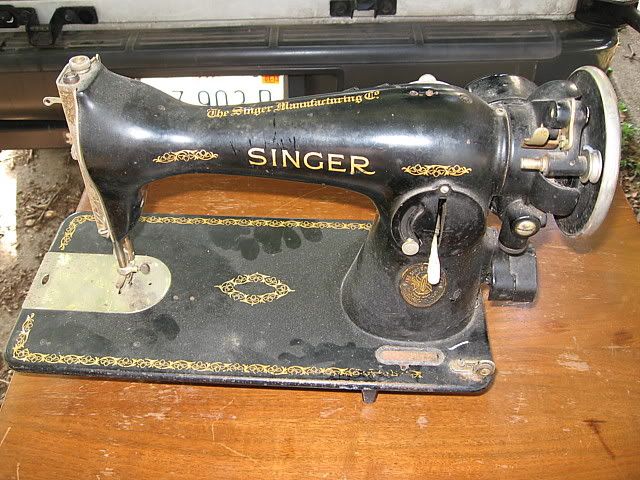
First, let me say that I am not going to do a tutorial on rewiring a potted motor. To get an excellent set of instructions go to Rains tutorial:
http://vssmb.blogspot.com/search/label/rewiring
Iím going to make some comments and mention some details that I think go along with Rainís tutorial.
Now right off I will say that I am on a dial up connection and the tutorial is very picture heavy. I could not read the entire tute because of how long it took my computer to load the pics. For his many sections it would have taken literally hours for this thing to load.
So I skimmed through to the sections I had questions on, took notes and used my own experience to fill in. So if I repeat something Rain said, or posted pictures about, itís because I didnítí see them.
I put the machine on my bench and tore it apart paying attention to what went where and assuming I was going to see something really scary complex. It must have eluded me as I didnít see it. The inside of that potted motor is SIMPLE. Thatís the only word for it.
There is actually more room to work inside of it than in most hang on motors.
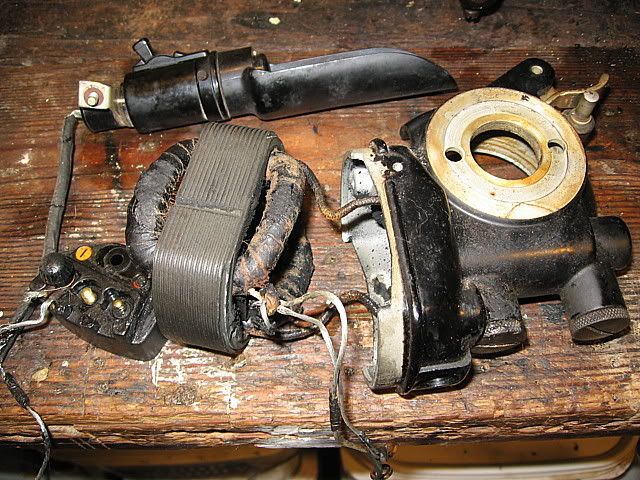
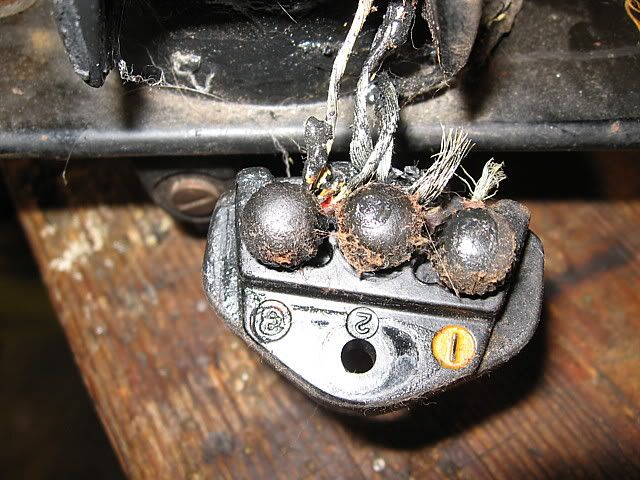
Now, the insides of the potted motor are simple, roomy and easy to clean, but from what Iíve seen in the pics in the tutorial, most or at least many of them were made with the aluminum wiring and the old latex insulation. This is a bad combination as the aluminum wiring tends to corrode and the latex insulation will turn gooey, sticky and eventually melt off, or it will turn crunchy and crumble off. Sometimes it will do both in the same machine. That was the case with my 15-91.
The insulation on the wiring outside of the motor melted, and ran all over the outside of the machine. Iíve worked for quite a while and still canít get it all off of the machine, you can see it still there in some of the pics. So I concentrated on learning how to rewire the potted motor to make the machine functional. Iíll get to the cosmetics later.
So weíve followed Rainís tutorial and weíve gotten to the point we have the new red and black wires soldered to the field wiring and weíve got it heat shrinked and tied in the Underwriters knot. And the 3Ē piece of heat shrink has been applied to the tails of the new wires.
In the pics on Rainís site I could see what looked like exposed wires right as they came out of the field coils, on my motor every last bit of the insulation had crumbled off the original wiring. And no matter that I had the heat shrink right up to the coils, when it shrunk, there were exposed wires. I canít leave wires exposed, so I had to figure out a way to fix it. Tape was out of the question. More heat shrink wouldnít help, so I bought a bottle of Liquid Tape at the True Value Hdwr store nearest me.
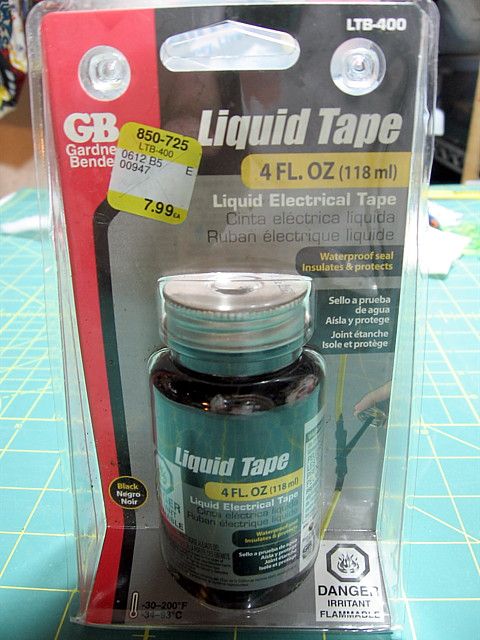
This stuff is like thick uncured rubber. Brush it on or put it on with a pointy stick wait 5 minutes and itís a cured rubber coating. I covered the exposed wires with it and the problem was solved.
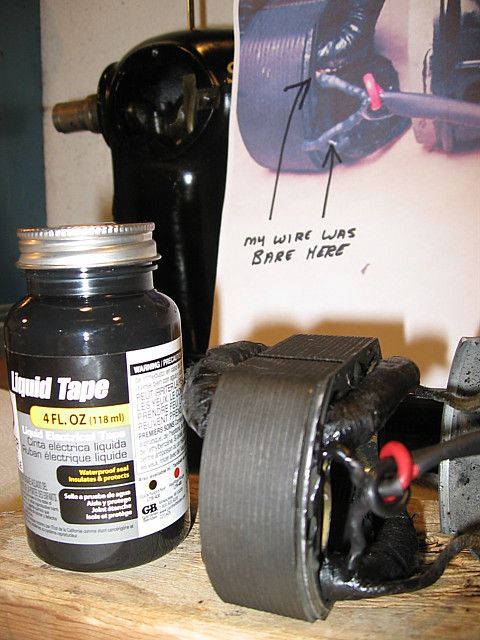
The next thing is the grommet in the housing that the wires pass through. Rain says look for a 7/16Ē grommet. But the hole in the housing is only 3/8Ē so the 7/16Ē grommet will not fit.
I suspect Rain was measuring the OD of the grommet but the measurement you need to match up is the hole ID. That is how grommets are measured.

Next is motor lube. Weíve got the motor back together except for the grease caps. What grease do I use to lube the gears? You use Singer Lube in the tube. The reason for this is that the housing has slots from the grease cap area directly into the gears.
On the one side is a hole for the wick to fit into to lube the shafts, then adjacent to that a slot for the gears. Each grease hole is made like this.
It took an entire tube of Singer Lube to fill the shaft wicks and the gears.
I had several older tubes of Singer lube so I used them up. Iím not sure what I will do next time as one of the newest tubes of Singer Lube has white grease in it. Looks like lithium grease. I do not know if this is the right lube or not, nor do I know if it will mix with the original lube.
I guess Iíll find out when I order some from Sew Classic.